To most of us living in areas with good cable and fiber internet infrastructure, 12 Mbps is absolutely unacceptable internet speed. But there are also large areas, mostly in the rural US, where 12 Mbps is considered a good speed. There are also areas where 10 Mbps or 12 Mbps is the max speed you can get. In some areas, you can get only 3 Mbps or 5 Mbps. Read this article, and you will learn how fast 12 Mbps actually is and what online activities are possible with 12 Mbps.
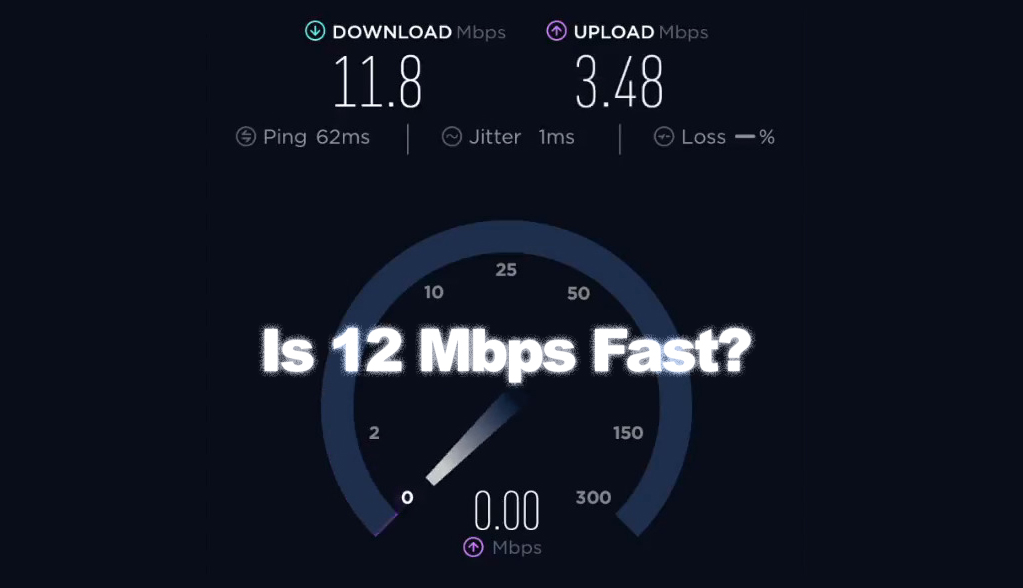
CONTENTS
Internet Speed Vocabulary
Before getting deeper into the matter, we need to cover some basics. We will explain terms related to internet speed, analyze different connections types and max speed they can deliver, discuss average speeds in the US, as well as the internet prices.
Speed, Bandwidth, Throughput
These three terms can cause lots of confusion. They are not the same thing even though many people, even internet providers, use them interchangeably.
Colloquially, we use the term speed to describe how many Mbps we get. If it’s a higher number, we say that the internet is faster. If it’s a lower number, we say it’s slower. Even our title says – is 12 Mbps fast? What you may not know is that Mbps (Megabit per second) is the measure of bandwidth, not speed.
Bandwidth is actually the max capacity of your internet connection. It tells you the max amount of data (in Megabits) your connection can handle per unit of time (second).
Throughput is closely related to bandwidth. It’s also measured in Mbps, and it also tells you the amount of data your connection can handle per unit of time. The difference is that throughput tells you the actual capacity, not the max capacity. Depending on many things, including the quality of internet infrastructure, number of connected devices, and even time of day, your throughput will vary. Best case scenario – your throughput will be the same as your bandwidth.
So, now you know what is throughput and what is bandwidth. But what about speed? Well, technically speaking, speed is closely related to latency, not bandwidth and throughput. It tells you how fast your internet works or how responsive your connection is. Latency measures the time needed for data to travel from your device to the server and then back to your device. If the latency is low, your internet is fast. If the latency is high, your internet is slow.
Still don’t get it? Don’t worry – we have a simple explanation. You would assume that 12 Mbps over DSL or cable is equally fast as 12 Mbps over satellite internet, but you would be wrong. Even though both connections offer the same bandwidth, satellite internet has much higher latency (600+ ms VS 10-50ms), which makes satellite connection much slower than DSL or cable. So, when you’re using satellite internet, and you click on a YouTube icon, it takes longer for the website to respond than when using DSL or cable.
It’s not a big deal if you say speed instead of bandwidth. We all do that. We just wanted to make a clear distinction between the two.
Difference between bandwidth and throughput
Download/Upload Speeds
Download speed (or rather bandwidth) is the max amount of data that your internet connection can receive. Upload speed is the max amount of data that you can send over your internet connection.
Most internet connection types (DSL, cable, satellite) deliver asymmetrical download and upload speeds. With these connection types, upload is significantly lower than the download. Fiber connection, on the other hand, delivers symmetrical speeds – download and upload speeds are the same.
If you’re thinking about subscribing to a plan that includes 12 Mbps download, there’s a good chance that your upload speed will be significantly lower (usually 2-3 Mbps). You will get 12/12 Mbps only with fiber, but fiber plans in the US usually start at 50/50 Mbps. You will hardly find a fiber plan that includes 12 Mbps download and 12 Mbps upload.
Why Are Upload Speeds Lower than Download Speeds?
Mbps and MB/sec
Mbps and MB/sec (or MBps) are both units that measure data rates. While Mbps is used to advertise internet plans and measure bandwidth/throughput, you will see data rates expressed in MB/sec when downloading or transferring files.
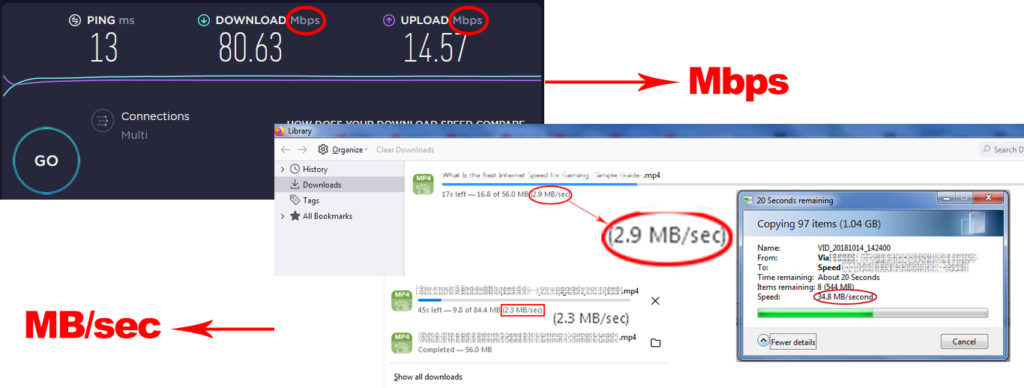
These two units look similar but are not the same thing. Mbps is Megabit per second, while MBps is Megabyte per second. MBps is 8x greater than Mbps. So, when downloading a file, the value expressed in MBps will be at least 8x lower than your advertised bandwidth.
Difference between Megabits and Megabytes per second
Connection Types
There are 5 commonly used internet connection types – DSL, fixed wireless, satellite, cable, and fiber. There’s also the sixth internet connection called BPL or Broadband over Powerlines but, since 2015/16, there are no BPL providers in the US.
Cable and fiber are mostly present in urban areas. These two connection types are, by far, the most capable when it comes to download speeds (up to 1 Gbps). Fiber can also deliver 1 Gbps upload, while upload speeds over cable are much lower (up to 100 Mbps, usually around 50 Mbps).
In the US, you have large sparsely populated areas without cable or fiber internet infrastructure. In these areas, people usually opt for one of the other three connection types. DSL is based on the use of the existing copper telephone lines. Fixed wireless internet is a popular choice in places where DSL is not available, and satellite internet is mostly used in places where no other connection type is available.

DSL, fixed wireless, and satellite internet are significantly less capable than fiber and cable. Depending on the type of DSL, you may even have access to speeds up to 100/20 Mbps. Fixed wireless internet can, theoretically, deliver the same speeds as VDSL, but fixed wireless internet plans are usually slower and pricier than DSL. Satellite internet can also reach speeds up to 100/20 Mbps but with much higher latency, which can be quite annoying, and is a dealbreaker when it comes to activities like online gaming.
Broadband Internet
It may sound strange, but the fact that you have some kind of internet access doesn’t mean that you have broadband internet. There’s an actual definition of broadband internet. FCC is the official government institution responsible for everything related to telecommunications and broadband internet. In 2015, FCC defined broadband internet as any internet connection that delivers download speeds of 25 Mbps or higher, and upload speeds of 3 Mbps or higher. There’s a debate on whether these benchmark speeds are too low or not, but the definition is still in force.
Broadband Internet Availability
More than 313 million people or 90.8 % of the US population use the internet every day. However, that doesn’t mean that all these internet users have access to broadband internet.
To get a better idea of how many people in the US have access to broadband internet, we have to look at the latest Broadband Deployment Report issued by the FCC. Have in mind that the latest data in this report is from 2019. The situation has probably improved over 2020 and 2021.
According to this document, 95.6% of the US population has access to broadband internet, which means that 4.4% doesn’t. 4.4% is more than 14 million people. So, these are the people that use internet at speeds lower than broadband benchmark speeds (3 Mbps, 5 Mbps, 10 Mbps, 12 Mbps).

Even 10/1 Mbps is not available to every American in the US. 97.8% of the population has access to speeds up to 10/1 Mbps. So, that means that 2.2% doesn’t have access to 10/1 Mbps. They have to use internet at much lower speeds than 10/1 Mbps.

The fact that you know how many people have to use the internet at speeds lower than 25/3 Mbps because they don’t have access to something better doesn’t tell you how many people in the US use the internet at speeds lower than 25/3 Mbps. Some people have access to speeds higher than 25/3 Mbps, but that doesn’t mean that they are actually subscribed to these speeds.
According to Microsoft data from November 2019, the number of people using the internet at speeds lower than benchmark broadband speeds is approx. 157.3 million. That’s much more than 14.4 million.
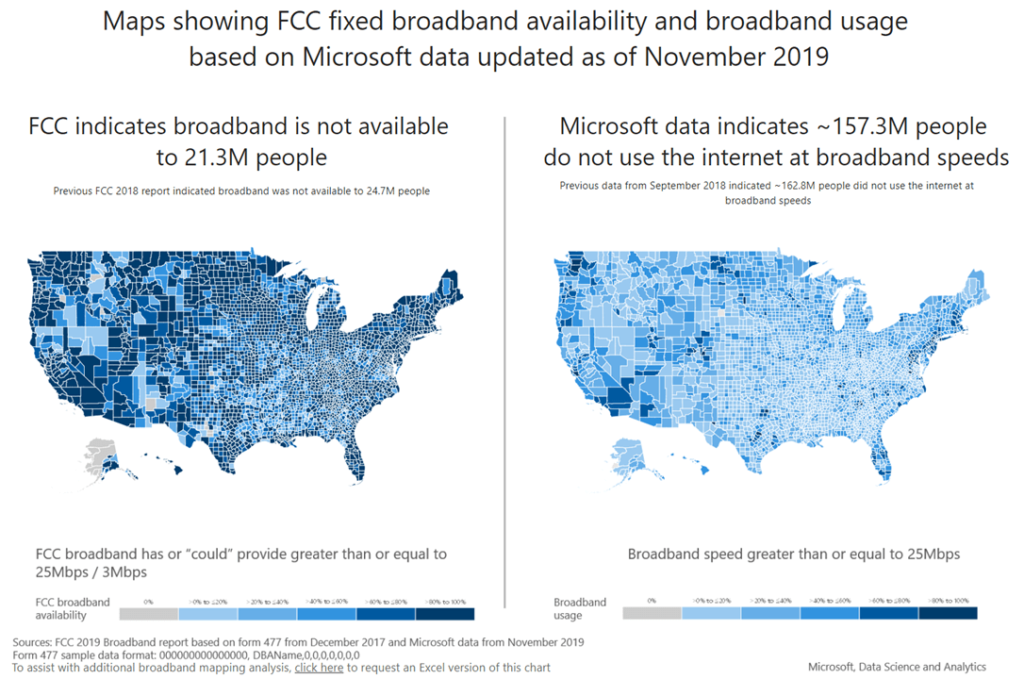
Average Internet Speeds in the US
Average internet speeds in the US have increased rapidly over the past 10-15 years. Back in 2011, the average internet speed in the US was 4.7 Mbps. In 2017, it was 18.7 Mbps.
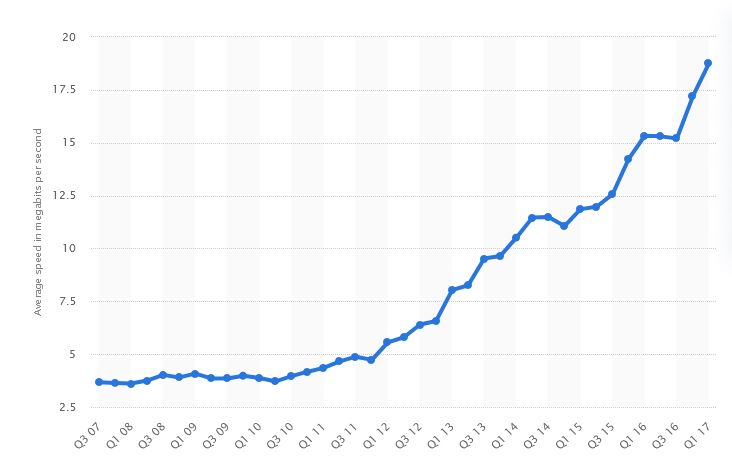
Average internet speeds in the US Q3 07 – Q1 17 (source – Statista)
With the expansion of fiber and cable networks over the past 4-5 years, the average speeds have increased rapidly. In 2019, more than 68 million people had access to Gigabit speeds, while 67% of the population had access to speeds up to 500 Mbps. Current fiber internet coverage in the US is 43%, while the current cable internet coverage is 88%.
Due to all these improvements, and also due to the changes in our lifestyle caused by the COVID-19 pandemic, the average speeds in the US are now much higher. Many people had to work from home and kids had to study from home, we streamed more movies, played more online games, so we needed more bandwidth, and we had to upgrade our plans.
According to highspeedinternet.com, the average internet speed in the US in 2021 is 99.3 Mbps. States with the best internet speeds are Rhode Island (129 Mbps), New Jersey (120.4 Mbps), and Delaware (119.1 Mbps). States with the lowest average speeds are Montana (54.4 Mbps), West Virginia (55.2 Mbps), and Idaho (55.4 Mbps).
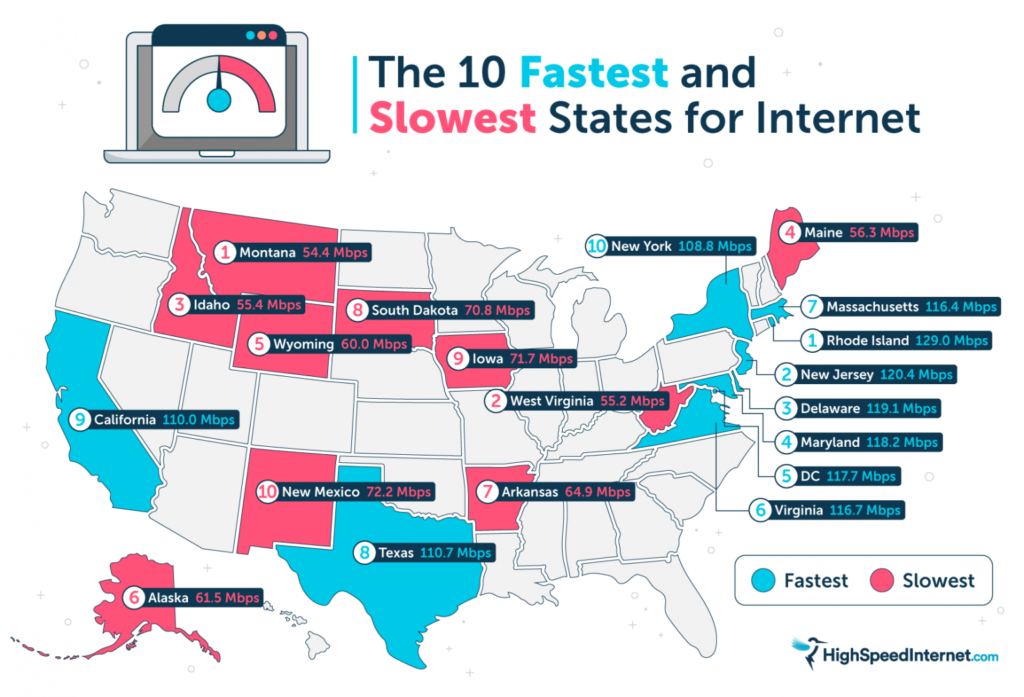
Ookla SpeedTest results give us even higher average speeds. Currently, the US has the 13th fastest average internet speed in the world with 203.81 Mbps download, 73.95 Mbps upload, and 24ms latency.
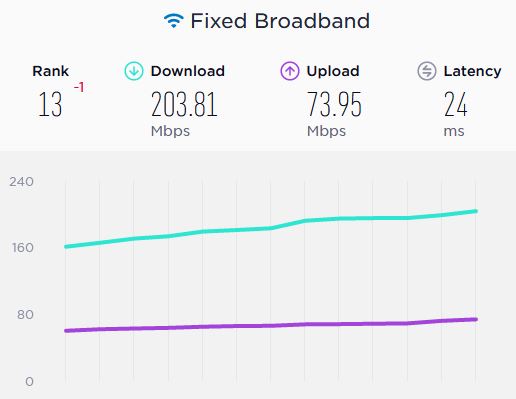
Average speeds in the US according to Ookla Speedtest
Median average speeds from the same research will give you a better picture. Median speeds by state range from 51.5 Mbps (Wyoming) to 158.19 Mbps (New Jersey).
The Price of Internet in the US
Internet in the US is very expensive. Our internet prices are among the highest in the world. Internet is particularly expensive in rural areas, especially when you consider what kind of speed you get for your money.
The disproportion in prices between cities and rural areas is huge. The disproportion in speeds is even bigger. If you live in a big city, you can get 100/100 fiber or 100/10 cable plan for the same amount of money you would have to pay for 25/3 DSL in a rural area.
Recommended reading :
- What Modems Are Compatible With Spectrum?
- What Wi-Fi Extenders & Wi-Fi Mesh Systems Works Best With Comcast?
- Which Wi-Fi Dongle is Best for PC?
It’s partially understandable that the speeds in rural areas have to be higher because ISPs have to invest more in infrastructure. But it’s not just about that. It’s more about the lack of competition.
ISPs have no interest in expanding their services and covering large sparsely populated rural areas because they don’t see any profit there. So, people in rural areas usually don’t get to choose between two or more ISPs – they have one provider (two at best), and they have to take the deal if they want internet access. That’s why people in rural areas pay more than folks in cities, and that’s why they use the internet at much lower speeds, often lower than broadband speeds.
Speed Requirements for Streaming, Gaming, and Other Online Activities
If you look at different services and different documents, you will find different speed recommendations. We did our research and gathered recommended speeds for various online activities from the most relevant sources. Let’s start with FCC recommended speeds.
FCC Recommendations
On the official website of the Federal Communications Commission, you will find a broadband speed guide with recommended minimum speeds for the most common online activities. We know that some people may have doubts when it comes to FCC recommendations, especially when you have in mind that FCC still refuses to change the definition of broadband internet, but we think that this speed guide is fairly objective.
Have in mind that these recommended speeds are just minimums and that they refer to just one device. For example, the min download speed for 4K streaming on one device is 25 Mbps. If you want to stream 4K content on two devices at the same time, you need at least 50 Mbps. If you need a plan that would allow you to stream 4K content on two devices at the same time, play online games on a third device, and use 3 phones for general browsing, you need at least 60 Mbps. Again, these are just minimums. For flawless performance, you may want to double the numbers.
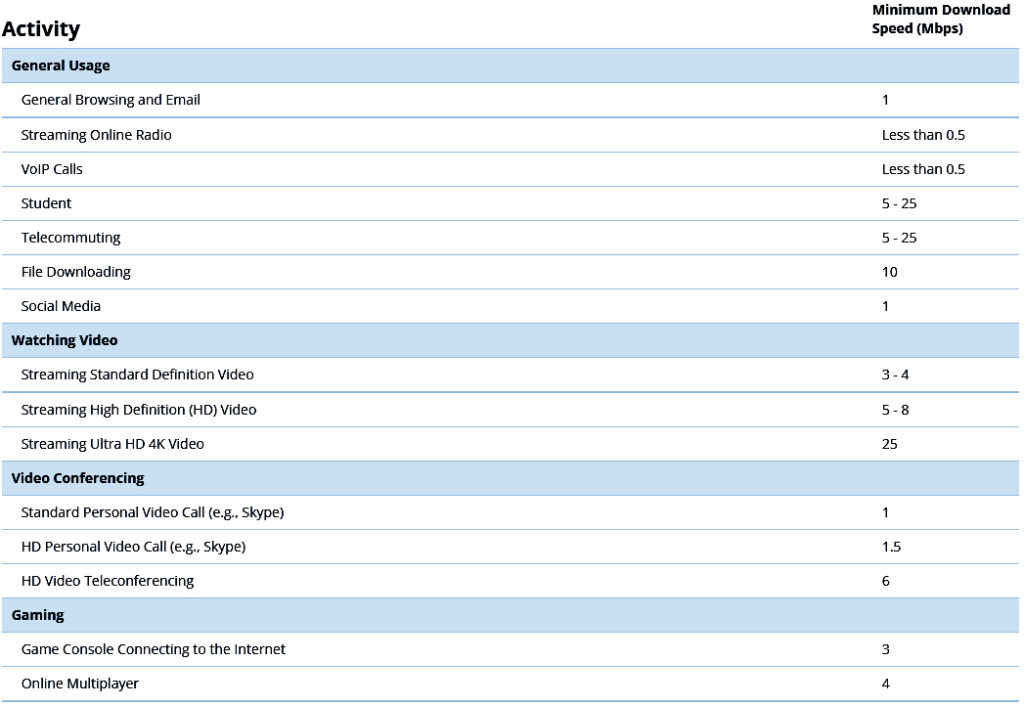
If you look at the table, you will see that 12 Mbps meets the minimum recommended speeds for most activities. 12 Mbps is not good enough if you’re working or studying from home, and if you want to stream in 4K. All the other activities are possible. Just not simultaneously.
Let’s now go through recommended speeds for various video and audio streaming services, as well as cloud gaming services and communication services.
Streaming Video/Audio Services
Most video streaming services offer content in HD (1080p) and 4K UHD. Some platforms also have content in lower resolutions (like 720p or 480p or 360p). Most services require at least 5 Mbps for HD content and 16-25 Mbps for 4K. So, if your speed is 12 Mbps, you should be able to watch videos in HD on any streaming service, but you won’t be able to watch 4K content. Here’re the recommended download speeds for the most popular services.
YouTube is one of the rare services that allows streaming in low quality down to 360p, but also in 4K and even 8K. YouTube requires 5 Mbps for HD videos and 20 Mbps for 4K videos. It also allows you to watch videos in 720p (2.5 Mbps). So, with 12 Mbps, you can easily watch 1080p videos on two devices at the same time, but only if there are no bandwidth-demanding processes in the background.

The second most popular streaming service in the US is Netflix. It allows you to stream in SD, HD, and 4K. With 12 Mbps, you can stream on 4 devices in SD or two devices in HD. Streaming is 4K is not possible with 12 Mbps.

Hulu allows you to stream in 720p, 1080p, and 4K. It has a very strong compression for 4K videos and requires lower speeds than most other platforms (16Mbps), but that’s still too much if you only have 12 Mbps. So, 4K is still not an option. You can stream on 4 devices in 720p or 2 in 1080p.

Amazon Prime probably has the strongest compression and lowest requirements of all popular streaming services – you need just 15 Mbps for 4K streaming or 3.5 Mbps for HD streaming. 12 Mbps is still not enough for watching 4K videos on Amazon prime, but you can watch videos in HD on three devices at the same time.

Apple TV+ and Disney+ have the same requirements – 5 Mbps for HD and 25 Mbps for 4K. With 12 Mbps, you can watch videos in HD on two devices simultaneously.


HBO offers content in HD only. There’s no option to stream in 4K. The min required speed is 5 Mbps.

When it comes to music streaming services, online radios, and podcast streaming services, 12 Mbps is more than enough for any service of your choice.
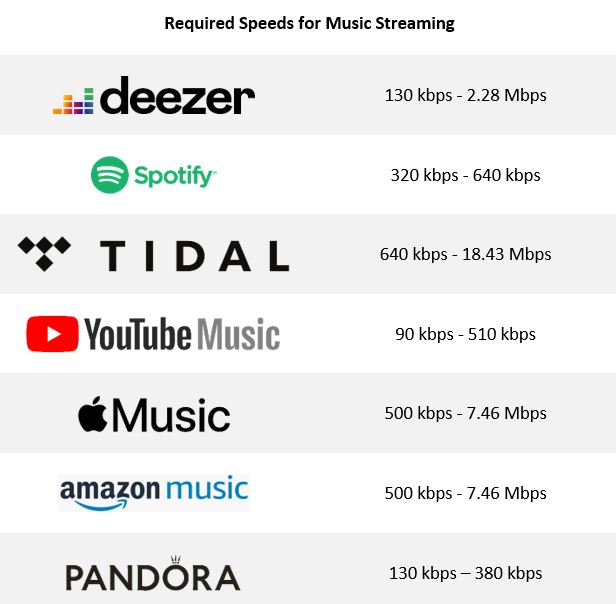
Live Streaming
If you want to watch live streams, you need 5-6 Mbps for HD streams, but if you want to create live streams, you need higher upload speeds. If you’re subscribed to cable, DSL, or satellite, and if your download speed is 12 Mbps, the chances are your upload speed is lower than 3 Mbps. With that kind of speed, you can hardly make a decent live stream. If you’re using fiber, then your speeds are symmetrical (12/12 Mbps), and that’s good enough for creating live streams.
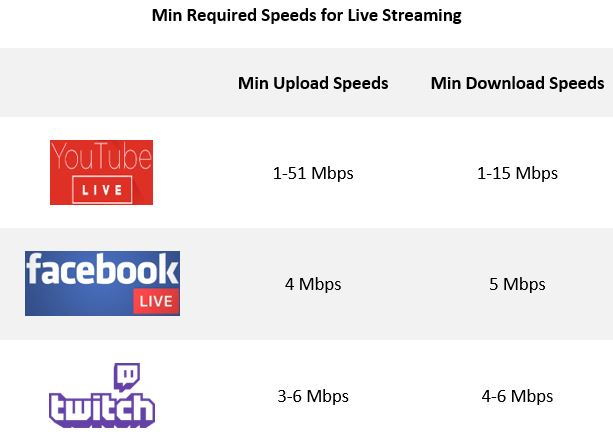
Online Gaming (Traditional and Cloud Gaming)
Online gaming is much more complex than any other online activity. It doesn’t depend just on your speeds. FCC recommends the min of 3 Mbps for gaming consoles and 4 Mbps for online gaming, but these are just download speeds. You also need decent upload speeds – at least 1-2 Mbps. And that’s not all. You need low latency, low jitter, and no packet loss. If your latency is higher than 200ms, it doesn’t matter if you have 100 Mbps download and 10 Mbps upload – any game will be unplayable.
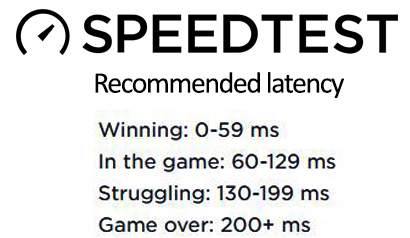
To sum things up, 12 Mbps could be a good speed for online gaming, but only if all the other factors are satisfying.
One thing that the FCC speed guide doesn’t mention is cloud gaming. This type of gaming is not the same as traditional gaming. Cloud gaming services work in a similar manner as video streaming services. The game is not rendered by your PC – it runs on a dedicated gaming server, and it’s streamed to your PC. Because of this, cloud gaming demands significantly higher download speeds.
Some cloud gaming services (Stadia, Vortex, PS Now) require at least 5-10 Mbps download, but the games don’t really run smoothly at 10 Mbps. I guess you could try playing games using these services, but the chances are – you will not be happy with the overall performance.

Video Calls
Communication services like Zoom and Skype depend on both – your download and your upload speeds. You need good download speeds to receive calls in HD, and you need decent upload speeds to send video in HD.
With 12 Mbps, you can easily make group calls and receive video in 1080p. You need 8 Mbps for Skype group calls that include 7 or more people. For Zoom group calls in 1080p, you need 3.8 Mbps. To send video in HD using Skype, you need 1.5 Mbps upload while Zoom requires 3 Mbps upload.

So, What Can I Do With 12 Mbps?
Well, my honest opinion is that you can’t do much. It can be good enough if you’re living alone and if you’re not a multitasker. For a family with two or three laptops, smartphones, smart TV, and a few other smart devices with Wi-Fi connectivity, 12 Mbps is not good enough.
You can watch HD videos on two devices with 12 Mbps. You can make video calls, check your social media and email accounts, you can even play online games, but you can’t do all these things at once. And you should pay attention to your bandwidth usage when doing something that demands a lot of bandwidth.

FAQ
Q: Is 12 Mbps good internet speed?
A: Most people in the US will tell you that it’s not, even those that use the internet at 12 Mbps. Still, it’s better than nothing, and it’s not like you can’t do anything with 12 Mbps. It’s good enough for casual browsing, email checking, even for watching videos in HD and traditional online gaming (assuming that your latency and jitter are low).
Q: Is 12 Mbps fast enough for gaming?
A: For gaming consoles and traditional online gaming, 12 Mbps is good enough, but you also need latency below 100ms, ideally below 50 or even 30ms. When it comes to cloud gaming, your experience will vary from service to service. 10 Mbps should be good enough for playing Stadia or Vortex in 720p, while you need just 5 Mbps for PS Now. Of those three, PS Now will deliver the best experience with 12 Mbps. Playing Stadia games with 10 or 12 Mbps won’t be a great experience.
Playing games on PS Now with 10 Mbps
Q: Can you watch Netflix with 12mbps?
A: Yes, you can. But not in 4K. You can watch videos in SD (3 Mbps required) and in HD (5 Mbps required).
Q: Is 12 Mbps fast enough for ps4?
A: Yes, 12 Mbps should be fast enough for PS4. Min recommended download speed for PS4 is 2 Mbps.
Q: Is 12 Mbps good for zoom?
A: There are minimum required download and upload speeds for different kinds of Zoom calls (HQ, 720p, 1080p, one-on-one calls, group calls). 12 Mbps download will allow you to receive all kinds of calls (one-on-one and group) in 1080p. The quality of the video that you’re going to send will depend on your upload speed. Zoom requires 1.2 Mbps for 720p 1-on-1 calls, 1.8 Mbps for 720p group calls, and 3 Mbps for 1080p calls (group and 1-on-1).
Q: What is a good WIFI speed?
A: There can hardly be only one good answer to this question. We can all agree that 500/500 Mbps or 1/1 Gbps are great speeds. But what is the lowest speed that can be considered good? To someone who is currently at 3 Mbps, 12 Mbps is a good Wi-Fi speed. Much better than 3 Mbps. If you ask FCC, 25 Mbps download and 3 Mbps upload are the benchmark speeds that differentiate good from bad speeds.
Q: How many devices can 12 Mbps handle?
A: It depends on how you use your internet. If you’re using it just to check your email account, then 12 Mbps can easily handle 5, maybe even 10 devices. If you are watching HD videos, it can handle just 2. Most people will tell you that 12 Mbps can hardly handle one device.

Hey, I’m Jeremy Clifford. I hold a bachelor’s degree in information systems, and I’m a certified network specialist. I worked for several internet providers in LA, San Francisco, Sacramento, and Seattle over the past 21 years.
I worked as a customer service operator, field technician, network engineer, and network specialist. During my career in networking, I’ve come across numerous modems, gateways, routers, and other networking hardware. I’ve installed network equipment, fixed it, designed and administrated networks, etc.
Networking is my passion, and I’m eager to share everything I know with you. On this website, you can read my modem and router reviews, as well as various how-to guides designed to help you solve your network problems. I want to liberate you from the fear that most users feel when they have to deal with modem and router settings.
My favorite free-time activities are gaming, movie-watching, and cooking. I also enjoy fishing, although I’m not good at it. What I’m good at is annoying David when we are fishing together. Apparently, you’re not supposed to talk or laugh while fishing – it scares the fishes.
